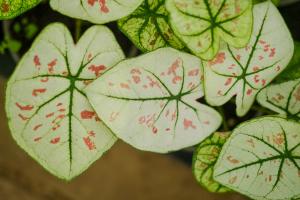Introduction
Tomatoes are annual plants, and to keep growing them every year, you need to save their seeds. Saving tomato seeds is easy, fun, and cost-effective. Instead of buying new seeds every year, you can preserve seeds from the fruits you grow and plant them again. In this article, we will discuss how you can save tomato seeds for planting next year, so let's get started.
Step-by-Step Guide to Saving Tomato Seeds
Step 1: Choose the Right Tomato
To save tomato seeds that are viable, healthy, and disease-free, you must choose the right tomato. Selecting a healthy plant that produces good quality fruit is crucial. So choose a tomato grown in a place that has similar growing conditions to where you plan to grow next year.
Step 2: Extract the Seeds
Once you've selected the right tomato, cut it open, and scoop out the seeds. Put them into a jar or a dish with a little bit of water, and let them ferment. Fermentation is the process that removes the gelatinous coating, which can cause the seeds to spoil. Leave the jar on the counter for a few days; when you see white or moldy scum on top of the water surface, gently stir, and top the water to remove debris and unviable seeds.
Step 3: Dry the Seeds
After fermentation, pour the contents through a sieve, and rinse the seeds in a sieve with fresh water. Spread the seeds evenly on paper towels, and let them dry for about two weeks. You can place the paper towels on a flat surface, in a dry, warm, and ventilated area.
Step 4: Store the Seeds
Once the seed is fully dry, store it in an airtight container such as a Mason jar or a Ziplock bag. Make sure the container is dry, and place it in a cool and dark place, such as a refrigerator or a freezer. If storing in the freezer, then make sure the seeds are in an airtight container to prevent moisture coming into contact with the seeds, which can reduce their viability.
Conclusion
Now that you know how to save tomato seeds, you can start preserving seeds from your favorite varieties and planting them again next year. This process is an eco-friendly and cost-effective way to ensure a regular supply of tomatoes from year to year. It is essential to store your seeds correctly to maintain their high quality, and viability, this way you can be sure of germination for several years. With patience and consistency, it's easy to master the art of saving seeds, so give it a try today and see the benefits for yourself!

 how many times do yo...
how many times do yo... how many planted tre...
how many planted tre... how many pine trees ...
how many pine trees ... how many pecan trees...
how many pecan trees... how many plants comp...
how many plants comp... how many plants can ...
how many plants can ... how many plants and ...
how many plants and ... how many pepper plan...
how many pepper plan...






























